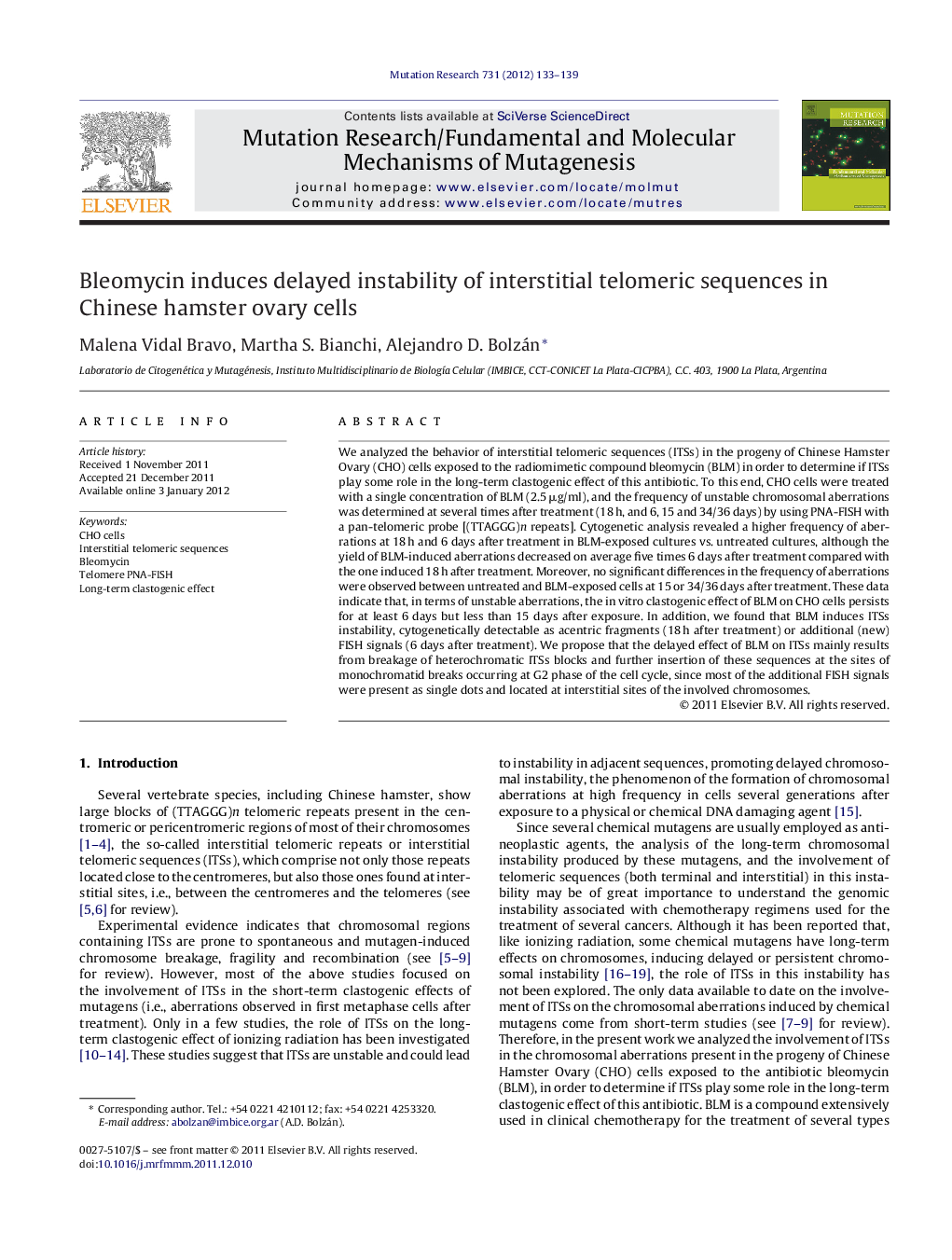| کد مقاله | کد نشریه | سال انتشار | مقاله انگلیسی | نسخه تمام متن |
|---|---|---|---|---|
| 2146539 | 1548354 | 2012 | 7 صفحه PDF | دانلود رایگان |

We analyzed the behavior of interstitial telomeric sequences (ITSs) in the progeny of Chinese Hamster Ovary (CHO) cells exposed to the radiomimetic compound bleomycin (BLM) in order to determine if ITSs play some role in the long-term clastogenic effect of this antibiotic. To this end, CHO cells were treated with a single concentration of BLM (2.5 μg/ml), and the frequency of unstable chromosomal aberrations was determined at several times after treatment (18 h, and 6, 15 and 34/36 days) by using PNA-FISH with a pan-telomeric probe [(TTAGGG)n repeats]. Cytogenetic analysis revealed a higher frequency of aberrations at 18 h and 6 days after treatment in BLM-exposed cultures vs. untreated cultures, although the yield of BLM-induced aberrations decreased on average five times 6 days after treatment compared with the one induced 18 h after treatment. Moreover, no significant differences in the frequency of aberrations were observed between untreated and BLM-exposed cells at 15 or 34/36 days after treatment. These data indicate that, in terms of unstable aberrations, the in vitro clastogenic effect of BLM on CHO cells persists for at least 6 days but less than 15 days after exposure. In addition, we found that BLM induces ITSs instability, cytogenetically detectable as acentric fragments (18 h after treatment) or additional (new) FISH signals (6 days after treatment). We propose that the delayed effect of BLM on ITSs mainly results from breakage of heterochromatic ITSs blocks and further insertion of these sequences at the sites of monochromatid breaks occurring at G2 phase of the cell cycle, since most of the additional FISH signals were present as single dots and located at interstitial sites of the involved chromosomes.
► Bleomycin induces chromosome damage in the progeny of CHO cells.
► Clastogenic activity of bleomycin is still present in CHO cells 6 days after treatment.
► Clastogenic activity of bleomycin decreases with time in culture and is lost 15 days after exposure.
► CHO cells show increased number of telomeric signals 6 days after bleomycin exposure.
► Bleomycin induces delayed instability of ITS.
Journal: Mutation Research/Fundamental and Molecular Mechanisms of Mutagenesis - Volume 731, Issues 1–2, 1 March 2012, Pages 133–139